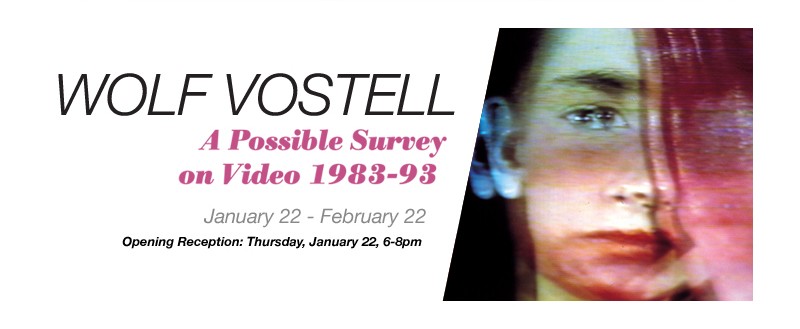
Wolf Vostell: A Possible survey on Video (1983-1993)
Arte Institute suggests “Wolf Vostell: A Possible survey on Video (1983-1993)” at Rooster Gallery.
Wolf Vostell: A Possible survey on Video (1983-1993)
January 22 – February 22
Opening reception: Thursday, January 22, 6-8pm
Rooster Gallery, 190 Orchad Street, Lower East Side, NYC
http://roostergallery.com
Rooster Gallery Contemporary Art presents “Wolf Vostell: A Possible survey on Video (1983-1993)” opening on Thursday, January 22 from 6pm to 8pm.
This exhibition – the second exclusively dedicated to Wolf Vostell’s video art at Rooster Gallery – is intended to celebrate the work of one of the most innovative European artists of the second half of the 20th century, a forerunner of video art, happening, installation and an active member of the Fluxus Movement.
After displaying Vostell’s videos in 2013 – starting with his seminal 1960s pieces “Starfighter” or “Sun In Your Head” through his 1982 video-installation “TV-Montparnasse” – Rooster Gallery will now complete this cycle dedicated to a medium he, along with fellow
artist friend Nam June Paik, developed and decisively helped to cement as a valid artistic medium. “Wolf Vostell: A Possible Survey On Video (1983-1993)” will now focus on Vostell’s late video works.
Born when National Socialism settled in Germany, Wolf Vostell (1932, Leverkusen – 1998, Berlin) grew up during Europe’s darkest hours and the subsequent reconstruction from rubble. The shift of the cultural poles left the European artists of the post Second World War at crossroads for which Paris was no longer able to provide an answer. New practices would inevitably emerge among the new generations who did not see the traditional artistic mediums as satisfactory. The thanatology of war, but also the new geopolitical map and the emergence of a new type of society, demanded something else.
Wolf Vostell’s body of work revolves around the practice of dé-collage, an unsubmissive act born during the German occupation of Paris. According to Giulio Carlo Argan, this practice “opposes the constructivity implicit to the cubist collage,” a discourse no longer viable after the experienced turmoils the continent successively suffered after 1929 and the death of the belief in rationality. If in the case of Nouveaux-Réalistes artists this practice never detached itself from the “affiches” and the verticality of its support, in Vostell’s work dé-collage achieves new possibilities when applied to different mediums, such as video. By encompassing several practices Vostell was in tune with his time, a time of political and ideological unrest, economic reconstruction and new technological possibilities.
Vostell’s video dé-collages (including the abovementioned “Sun In Your Head”) were first shown in New York in 1963 at the Smolin Gallery, known for championing avantgarde experimental practices, further attesting Vostell’s pioneering role.
According to Sabine Maria Schmidt, “Vostell was never primarily a video artist, nor did he have any aspirations to become one. From the early 1960s onwards, his happenings, actions and installations used a wide range of media, even if he did keep reverting to television and the other mass media, and in doing so he supplied some important and highly complex stimuli for the early days of video art discourse.”
Rooster Gallery represents the Wolf Vostell Estate in New York.

